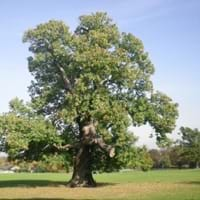Life Span
Perennial
Perennial
Type
Flowering Plants
Tree
Origin
Italy, Southern Europe, western Balkans
Eastern Asia
Types
not available
Not Available
Habitat
Islands, Not Available
Temperate Regions
USDA Hardiness Zone
7-10
6-8
Sunset Zone
21,22
A3, 2a, 2b, 3a, 3b, 4, 5, 6, 7, 8, 9, 10, 12, 14, 15, 16, 17, 18, 19, 20, 21, 22, 23, 24
Habit
Upright/Erect
Oval or Rounded
Flower Color
Lavender, Light Blue, White
Red, Purple
Flower Color Modifier
Bicolor
Bicolor
Fruit Color
Non Fruiting Plant
Red, Green
Leaf Color in Spring
Green, Light Green
Green, Light Green
Leaf Color in Summer
Green, Light Green
Green
Leaf Color in Fall
Green, Light Green
Yellow, Gold
Leaf Color in Winter
Light Green
Not Available
Leaf Shape
Compound
Oblong or Lanceolate
Plant Season
Summer, Fall
Spring, Summer, Fall, Winter
Sunlight
Full Sun, Partial Sun
Full Sun, Partial Sun, Partial shade
Type of Soil
Loam
Clay, Loam, Sand
The pH of Soil
Acidic, Neutral
Acidic, Neutral, Alkaline
Soil Drainage
Average
Well drained
Bloom Time
Early Summer, Summer, Late Summer
Spring
Tolerances
Heat Tolerance
Shade areas
Where to Plant?
Ground, Pot
Ground
How to Plant?
From bulbs, Seedlings, Stem Planting
Grafting, Seedlings
Plant Maintenance
Low
Medium
Watering Requirements
Average Water Needs, Do Not over Water, Never Over-water, Requires regular watering
Average Water Needs
In Summer
Lots of watering
Lots of watering
In Spring
Moderate
Moderate
In Winter
Average Water
Average Water
Soil pH
Acidic, Neutral
Acidic, Neutral, Alkaline
Soil Type
Loam
Clay, Loam, Sand
Soil Drainage Capacity
Average
Well drained
Sun Exposure
Full Sun, Partial Sun
Full Sun, Partial Sun, Partial shade
Pruning
Remove damaged leaves, Remove dead branches, Remove dead leaves, Remove dead or diseased plant parts
Remove damaged leaves, Remove dead branches, Remove dead leaves
Fertilizers
fertilize every 2-3 weeks while growing, fertilize in growing season
All-Purpose Liquid Fertilizer
Pests and Diseases
fungus
Fungal Diseases, Squirrels
Plant Tolerance
Drought, Heat Tolerance
Drought
Flowers
Showy
Insignificant
Flower Petal Number
Single
Single
Showy Foliage
Not Available
Yes
Foliage Texture
Not Available
Fine
Foliage Sheen
Not Available
Matte
Attracts
Birds, Insects
Not Available, Squirrels
Allergy
Toxic
Oral Allergy, Throat itching
Aesthetic Uses
Beautification, Landscape Designing, Showy Purposes
Beautification, Landscape Designing
Beauty Benefits
Not Available
Not Available
Environmental Uses
Air purification
Air purification
Medicinal Uses
Asthma, Cough, Unknown
Potassium, Rich in Iron, Vitamin A, Vitamin B, Vitamin C
Part of Plant Used
Flowers, Leaves
Seeds
Other Uses
Decoration Purposes, Showy Purposes, Used as Ornamental plant
Food for animals, Used as a nutritious food item, Used As Food, Used for its medicinal properties, Used for Landscaping
Used As Indoor Plant
Yes
No
Used As Outdoor Plant
Yes
Yes
Garden Design
Mixed Border, Wildflower
Container, Feature Plant, Foundation, Mixed Border, Rock Garden / Wall, Topiary / Bonsai / Espalier
Botanical Name
CAMPANULA pyramidalis
Castanea sativa
Common Name
Chimney Bellflower
Sweet Chestnut, Chestnut
In Hindi
Chimney Bellflower
शाहबलूत का फल
In German
Schornstein Glockenblume
Esskastanie
In French
cheminée Bellflower
châtaignier
In Spanish
Chimenea Bellflower
Castaña dulce
In Greek
καμινάδα καμπανούλα
Sweet Chestnut
In Portuguese
chaminé Bellflower
Castanheiro
In Polish
komin Bellflower
słodki Chestnut
In Latin
caminorum purgatores Bellflower
Dulce Chestnut
Phylum
Tracheophyta
Magnoliophyta
Class
Magnoliopsida
Magnoliopsida
Order
Asterales
Sapindales
Family
Campanulaceae
Aceraceae
Clade
Angiosperms, Asterids, Eudicots
Angiosperms, Eudicots, Rosids
Tribe
Not Available
Not Available
Subfamily
Not Available
Not Available
Number of Species
Not Available
Not Available
Importance of Chimney Bellflower and Sweet Chestnut
Want to have the most appropriate plant for your garden? You might want to know the importance of Chimney Bellflower and Sweet Chestnut. Basically, these two plants vary in many aspects. Compare Chimney Bellflower and Sweet Chestnut as they differ in many characteristics such as their life, care, benefits, facts, etc. Every gardener must at least have the slightest clue about the plants he wants to plant in his garden. Compare their benefits, which differ in many ways like facts and uses. The medicinal use of Chimney Bellflower is Asthma, Cough and Unknown whereas of Sweet Chestnut is Potassium, Rich in Iron, Vitamin A, Vitamin B and Vitamin C. Chimney Bellflower has beauty benefits as follows: Not Available while Sweet Chestnut has beauty benefits as follows: Not Available.
Compare Facts of Chimney Bellflower vs Sweet Chestnut
How to choose the best garden plant for your garden depending upon its facts? Here garden plant comparison will help you to solve this query. Compare the facts of Chimney Bellflower vs Sweet Chestnut and know which one to choose. As garden plants have benefits and other uses, allergy is also a major drawback of plants for some people. Allergic reactions of Chimney Bellflower are Toxic whereas of Sweet Chestnut have Oral Allergy and Throat itching respectively. Having a fruit bearing plant in your garden can be a plus point of your garden. Chimney Bellflower has no showy fruits and Sweet Chestnut has showy fruits. Also Chimney Bellflower is not flowering and Sweet Chestnut is not flowering . You can compare Chimney Bellflower and Sweet Chestnut facts and facts of other plants too.





